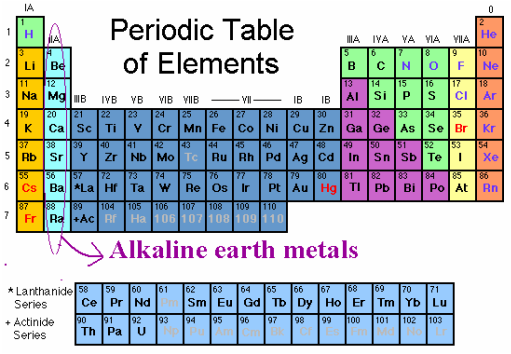

Alkali and Alkaline Earth Metals provides students and scientists with an up-to-date understanding of each of the nonmetals-where they came from, how they fit into our current technological society, and where they may lead us. Lithium, sodium, potassium, magnesium, and calcium are only a few of the topics covered in this full-color resource. With information pertaining to the discovery and naming of these elements as well as new developments and dilemmas, this new book examines how humans use alkalis and alkaline earths and their benefits and challenges to society, health, and the environment. The same is true for the alkaline earths.Īlkali and Alkaline Earth Metals presents the current scientific understanding of the physics, chemistry, geology, and biology of these two families of elements, including how they are synthesized in the universe, when and how they were discovered, and where they are found on Earth. The alkali metals, for example, are metals, but have such special properties that they are given their own classification. ISBN 978-0-14-025776-2.Scientists categorize the chemical elements as metals, nonmetals, and metalloids largely based on the elements' abilities to conduct electricity at normal temperatures and pressures, but there are other distinctions taken into account when classifying the elements in the periodic table. Mendeleyev’s Dream: The Quest for the Elements. Metals, Microbes and Minerals: The Biogeochemical Side of Life.


The nonmetals are another key element group. This is a list of metals in order of increasing atomic number. These conditions are typically found under extreme conditions such as high pressures or when frozen solid. *Bonus Fact* Under certain conditions hydrogen can act as a metallic element.

Metals are shiny, with a metallic luster.Metals are solid at room temperature (with the exception of mercury).The metals share several common properties, including: Here is a list of metals, their location on the periodic table, their properties, and uses. Elements that are not metals include the metalloids, nonmetals, halogens, and noble gases. The metals consist of the alkali metals, alkaline earths, transition metals, lanthanides, and actinides. They are grouped together in the middle to the left-hand side of the periodic table. Most elements on the periodic table are metals. The highlighted elements are considered the metal elements.


 0 kommentar(er)
0 kommentar(er)
